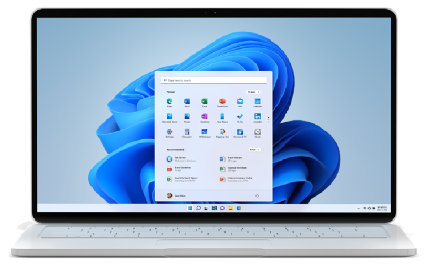-
×InformationNeed Windows 11 help?Check documents on compatibility, FAQs, upgrade information and available fixes.
Windows 11 Support Center. -
-
×InformationNeed Windows 11 help?Check documents on compatibility, FAQs, upgrade information and available fixes.
Windows 11 Support Center. -
- HP Community
- Desktops
- Business PCs, Workstations and Point of Sale Systems
- Have you installed Windows 11 to HP z620 (Z820), etc. with a...

Create an account on the HP Community to personalize your profile and ask a question
10-15-2025 11:25 AM
I have a z620 with an NVMe card in it that contains my Operating System, presently Windows 10 (22H2).
I am about to install Windows 11 on it. It does not have TPM 2.0, so I need to use one of the ways to get around this. One way is to use RUFUS. A second way is to enter certain commands in a Command Prompt (admin mode) window. These methods work on most regularly configured PCs as I understand it. I have an NVMe card, however, which is a non-standard option to the z620.
Have any of you installed Windows 11 on a Zx20 model (Z620, Z820, Z440) that has been converted to run the OS from an NVMe card? If so, was the install a cinch, or were there special actions to get it to install.
10-15-2025 11:37 AM - edited 10-15-2025 11:40 AM
depending on your skill level the win 11 mod to bypass the CPU/TPM check can be trivial or hard the program RUFUS automates this as much as possible making it a rather simple couple of mouse clicks during the windows 11 USB install key creation
NVME as a data drive is not a issue, NVME as a boot device can be troublesome depending on if it's software based or hardware based using specific model(s) of datacenter type ssd's
PM me if you want a custom HP win 11 zX20 install image specific for this series HP workstations i've installed both win 10 and 11 to booting SSD on the Zx20 line of workstations
10-16-2025 11:45 AM
To OP:
Not sure what you mean when you say you have a NVMe card and imply you're booting W10 from that. What card? Reason I ask is that I've posted here on special NVMe cards that have on-controller OPROM boot code that lets them supplement the ZX20 boot code and truly boot normally. Have done that on multiple HP workstations. So, the answer is yes, I have that here on my Z620 workstations. The "card" can be one of several Intel add-in-cards. I have posted on how to update their firmware to the latest, and the single BIOS switch that needs to be changed to let them read the OPROM boot code. Works great. I can also give how I use Rufus and DiskPart to get the W11 24H2 installed, and it is a tiny step to then enable 25H2.
You can see my long blog-like post here figuring that out... must search in the forum for OPROM.
10-16-2025 12:19 PM - edited 10-16-2025 02:18 PM
A bit of added info. GPT partitioning of your boot drive is very important for ease of both clean installs of W11 on NVMe drives with supplemental OPROM boot code in their internal controller, and also for east of in-place upgrades to W11. I create my Rufus 4.9 thumb drive installer with the latest .iso for the W11 OS, and I check all the boxes in the Rufus options page which opens when you click on START. The thumb drive that gets created can be booted from (for clean installs). However, you can also try starting with your current W10 install and try an in-place upgrade to W11 by navigating into the Rufus thumb drive and launching from the setup.exe in there.
Unfortunately, clean installs are usually best because the in-place upgrades tend to drag along some old drivers. I've in-place upgraded from W7 to W10 to W11 in some workstations and have checked for that. Yes, it happens.
10-16-2025 10:20 PM
SDH, the current ver of rufus is v4.11
which has support for the 25H2
which is the current default ISO download at the time of this post
https://www.microsoft.com/en-us/software-download/windows11
also note that currently at this post date there is a issue with the windows 10 to 11 upgrade tool that may prevent some users from doing a in place update no date from MS currently on when this will be resolved
10-17-2025 01:16 PM
I have a Samsun 970 EVO Plus NVMe card. I used a method outlined by DGroves and others to install my NVMe card on my z620. I wrote up the detailed procedure and posted on these Community pages (21K+ views so far if I am reading those info things correctly). My OS is on the NVMe card.
I am aware of RUFUS. It seems that is an option I can use to create my customized Win 11 USB Drive from the Windows supplied Win 11. Sounds like it should not be a problem. Still have to decide whether clean install or an update.
I found another method for bypassing the TPM 2.0 thing on youtube where one enters commands into a Command Prompt Window.
10-17-2025 01:19 PM
So my question is whether someone else has successfully installed Win 11 on the NVMe. And I am finding that it has been done - so that is good news. I don't want to end up with a computer that is a vegetable and where I then have to reinstall Windows 10 or do something else that is drastic.
10-17-2025 04:28 PM
I'm going to guess that what you're asking is whether anyone has used the method you use to get a NVMe M.2 form factor SSD to work as a boot/applications drive in a Z420/Z620/Z820 workstation. I don't know what method you use... can you please provide a link to your post on how you do it?
My method can work on only a few special NVMe drives that have embedded supplemental boot code that combines with the ZX20's BIOS boot code and allows those NVMe drives to boot. One is the special Samsung 950 Pro NVMe M.2 SSD... to my knowledge Samsung did that only for the 950 Pro. The others are Intel data center NVMe drives that also have supplemental boot code. There is a single BIOS change in the ZX20 that enables BIOS to read that OPROM code during boot, and it works well. The link to that HowTo post is HERE .
10-17-2025 10:05 PM
and i have done the software based nvme boot loader method and the data specific "OPROM" hardware based SSD installs of windows 11
and a warning, a clean install of windows 11 is highly recommended upgrading from win 10 to 11 can uncover unknown problems resulting in either a failed upgrade or a trashed win 10 OS due to the inability to cleanly revert back to win 10 from a failed win 11 update if you do go this route backup all data first before starting the upgrade

